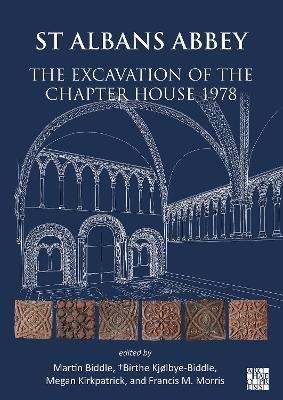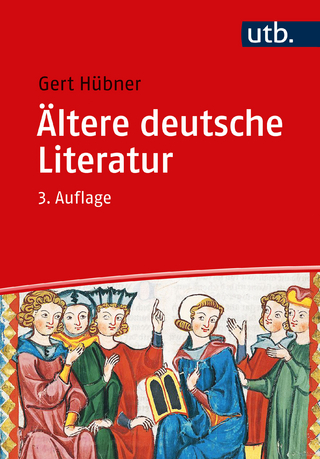
St Albans Abbey
Archaeopress (Verlag)
978-1-80327-708-0 (ISBN)
St Albans Abbey is one of the greatest of medieval England. The origins of the medieval abbey lie much further in the past, in the time of Roman Verulamium, and the early history of the abbey is that of the martyrdom of Alban, whose burial is associated with the area of the abbey itself. The creation of memorial churches over the graves of saints outside the walls of Roman cities is commonplace in the world of late antiquity. One has only to think of St Peter’s or St Paul’s without the Walls in Rome, but in Britain no single case is yet known, other than St Albans.
This book is about the excavation in 1978 of the site of the medieval chapter house of St Albans Abbey, a building second in importance only to the abbey church itself. The excavation took place in response to the impending construction of a new chapter house, on the exact site of its medieval predecessor, demolished following the suppression of the abbey in the sixteenth century.
Enigmatic finds had long revealed that this early Christian site on the hill, now dominated by the great mass of the Norman abbey church, is one of the most important for the study of the history of early England. In just four short months, excavations uncovered fragments of the decorated floor of the Anglo-Saxon abbey and associated burials, along with the magnificent floor of relief-decorated tiles of the medieval chapter house, and the graves of sixteen known figures of the late eleventh-to fifteenth-century abbey, including eleven abbots.
Professor Martin Biddle is an Emeritus Fellow of Hertford College, Oxford, and Honorary Fellow of Pembroke College, Cambridge. He was the first Lecturer in Medieval Archaeology in England, at the University of Exeter (1963–67) and he has held many other distinguished academic positions worldwide. He is the Founder and Director of the Winchester Excavations Committee (1962–present) and was the Archaeological Consultant at St Albans Cathedral until 2023. Birthe Kjølbye-Biddle was a Danish archaeologist who transformed approaches to archaeological excavation in England. She introduced metric measurements and imposed new standards of rigour in excavation, stratigraphic recording, and analysis. These were adopted throughout the work of the Winchester Excavations Committee which she joined in 1964. This technical brilliance provided the basis for her forthcoming posthumous publication of the archaeology of the Anglo-Saxon minsters of Winchester. Megan Kirkpatrick is completing a DPhil. in Medieval Archaeology at the University of Oxford. This focusses on the medieval castles of Wales, but she has a keen interest in heritage in the Middle East as well as in Wales, and has collaborated with organisations such as the Aerial Photographic Archive for Archaeology in the Middle East. She currently works for the Commonwealth Heritage Forum. Francis M. Morris took a DPhil. in Archaeology at the University of Oxford in 2010 and subsequently worked at the Oxford Celtic Coin Index and on the preparation of this book. Since 2012 he has contributed to the publication of books in the Winchester Studies series, especially on WS 3.i Venta Belgarum: Prehistoric, Roman and Post-Roman Winchester, WS 4.i The Anglo-Saxon Minsters of Winchester (forthcoming), and WS 11 The British Historic Towns Atlas of Winchester. He currently works for Archaeological Research Services.
PART 1. INTRODUCTION
1. Introduction
PART 2. THE ARCHAEOLOGICAL EVIDENCE
1. The Geology of the Site
2. The Site Before the Building of the Chapter House
3. The Chapter Houses
4. The Slype
5. The East Cloister Walk
6. The Dorter Range
7. The Areas around the Chapter House
PART 3. THE ARCHITECTURE AND DECORATION OF THE CHAPTER HOUSE
1. The Building Stones
2. The Tiled Floors of the Chapter House
3. The Sculpture and Mouldings of the Third (Rectangular) Chapter House
4. The Pigments Used in Painting the Sculpture of the Third (Romanesque) Chapter House of 1151–66 and a Gothic Screen of c.1325–50
5. The Ironwork of the (Romanesque) Door of the Slype
6. The Architecture of the Fourth Vaulted Fifteenth-Century Chapter House
7. The Window Glass and Leading of the Fifteenth-Century Chapter House
8. Slip-Decorated and Plain Floor Tiles
9. The Repaving of the Presbytery in the 1870s Using Minton Tiles Copied from the Paving of the Third Chapter House
PART 4. BURIALS
1. Burials Before the Chapter House: The Skeletal Remains
2. Burials in the Chapter House: Identification, Written Evidence, and Discussion
3. Burials in the Chapter House: The Skeletal Remains
4. Coffins
5. Marble Tomb Slabs
6. The Purbeck Marble Indent for a Brass of Master Adam Rous and Indents of Brasses Found in the Shrine of St Alban
7. The Reburial in the Presbytery in 1979 of the Abbots and Others Buried in the Medieval Chapter House
PART 5. FINDS
1. Coins and tokens
2. Papal Bulla
3. Stirrup-Shaped Gold Ring
4. Gold Thread trom the Grave of Abbot Warin of Cambridge
5. Ivory Crozier of Abbot Warin of Cambridge
6. Pewter Chalice from the Grave of Robert of the Chamber (d.1154 x 1160)
7. Gilt Copper-Alloy Disc Probably from a Brooch
8. Copper-Alloy Hooked Fastener
9. Objects of Copper Alloy and Gold
10. Ironwork
11. Lead Objects
12. Bone Objects
13. Neolithic Polished Axe and Worked Flints
14. Roman Vessel and Window Glass
15. Medieval Vessel Glass
16. Roman Glass Beads
17. Lava and Sandstone Querns
18. Pottery
19. Clay Tobacco Pipes
20. Animal Bones
21. Modern Coffin Furniture
APPENDICES
Appendix I. Burials in the Chapter House
Appendix II. Sections
| Erscheinungsdatum | 01.06.2024 |
|---|---|
| Verlagsort | Oxford |
| Sprache | englisch |
| Maße | 290 x 203 mm |
| Gewicht | 726 g |
| Themenwelt | Geisteswissenschaften ► Archäologie |
| Geschichte ► Allgemeine Geschichte ► Mittelalter | |
| Technik ► Architektur | |
| ISBN-10 | 1-80327-708-4 / 1803277084 |
| ISBN-13 | 978-1-80327-708-0 / 9781803277080 |
| Zustand | Neuware |
| Haben Sie eine Frage zum Produkt? |
aus dem Bereich


